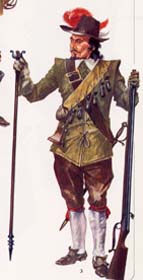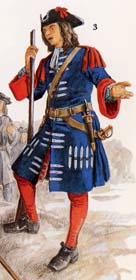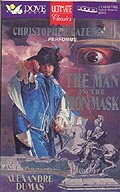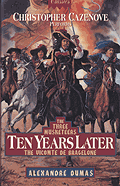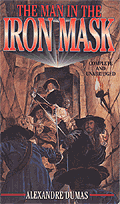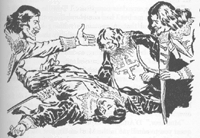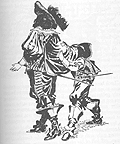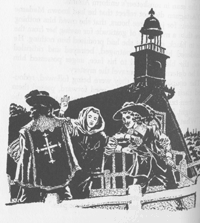|
The 'Look' of the Musketeers Okay, here's the part I know is going to disappoint a lot of people - I know it disappointed me. There just isn't a whole lot to tell about the uniforms of the Musketeers because the uniforms were not that common and not that varied. This shouldn't be surprising since the Dumas books are based on only one Musketeer we know much about, D'Artagnan - and even he is so highly fictionalized as to almost treat him as a different soldier. Really, the bottom line is, which research into 'musketeers' will reveal quite quickly - musketeers in reality are nothing like the stories we were raised on. Know one thing: Historical musketeers were very much the essence of the word's definition - MUSKETeers. Despite the plethora of uniforms in the books and movies - the Musketeers were not actually given a uniform until 1657. What pitiful few sources I was able to locate conflict on the color of the cross on the tabard. Both sources agree the mid body length tabards were always blue, one citing sky blue with a gold cross and the other source citing blue with a silver lace and a silver cross. The first group of Musketeers were given steeds of a grey color with silver tails - hence the company was known, quite logically, as the Grey Musketeers. In 1660, a company of Mazarin's soldiers were converted to Musketeers by Louis XIV and given black horses - hence the Black Company. It was also at about this time that the traditional tabard was considered awkward and detrimental to fighting. At this time a blue justacorps was adopted, layered over a red foundation. Another account of the Musketeers in 1665 is as follows: The 300 Grand Musketeers wore blue riding cassocks embroidered on both sides with golden crosses over the sun. The sun became part of the emblem because it was the symbol Louis XIV took upon himself as the "Sun King." They were said to ride white/mottled colored horses. These horses bore caparisons with silver suns. The lesser Musketeers, as they were called in the account wore drugget tabards and coats with no embellishments. The horses of the lesser Musketeers bore caparisons with the initial 'L' and a royal crown in gold. The number of Musketeers seems to be commonly agreed at 120 - although this may vary. I have seen this number quoted during research involving Treville as well as a separate source which took a short paragraph discussing what little there was to be said about the history of the look of the Musketeers. There was indeed, under Richelieu, a Cardinal's guard - which was also quite disliked by the people of France. My advise - If you are going for authenticity... Don't go flashy - because, folks, it just wasn't flashy. If you like creative liberty (which I do!) - go for it! Interested in Costuming? See my links!
|
|||||||||||||||||||||||||||||||||||||||||||||
Just
for Fun! Images of Musketeers in Books and Movies
|


